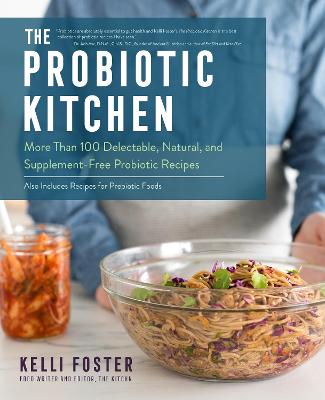Reviewed by annieb123 on
The Probiotic Kitchen is a guide to improving the gut biome with recipes to utilize fermented and live culture ingredients into family friendly dishes which will also support and improve gut health. Due out 17th Dec 2019 from Quarto on their Harvard Common Press imprint, it's 208 pages and will be available in paperback and ebook formats.
It's important to note that this is a book which is written around -using- probiotic ingredients, and not specifically for making the fermented/processed ingredients themselves. It does include a basic recipe for 2 sauerkrauts, pickled vegetables, -very- basic kimchi, and fermented salsa.
The introduction (~7% of the content) covers some basic information about gastrointestinal health and the gut biome. There's also a short introduction to prebiotics and how (and why) to use them in conjunction with probiotics.
The following 2 chapters cover sourcing probiotics by buying them (chapter 1) or making your own with the basic recipes above (chapter 2). The rest of the book contains the recipes arranged thematically: breakfast, smoothies/drinks/snacks, dressings/sauces/condiments, lunch, soup/salad/appetizers, main dishes, sides, and desserts.
Each of the recipes includes an introductory description, ingredients listed in a bullet point sidebar (US measurements given, with metric in parentheses), and step by step instructions. There is no nutritional info provided. The recipes are photographed very well and clearly, with roughly 25% of the dishes shown in a photograph. Serving suggestions are attractive and appropriate. There are some vegan friendly recipes, but many aren't as they contain milk products and honey. There are some recipes which could be worked to make them AIP friendly also, but that's not a focus of the book, and auto-immune friendly recipes are not specifically mentioned.
The recipe ingredients themselves are easily sourced and will be available at most well stocked grocery stores.
The book does include a solid cross referenced index which includes ingredients.
This would be a good choice for people who are interested in experimenting with probiotic recipes who are either learning or don't feel the need to control the process from the very beginning and are willing to use already made ingredients. Many (most) of the recipes make small amounts (generally 2 servings except for main dishes which are 4+); but I don't see a problem with doubling or quadrupling the recipes.
Four stars.
Disclosure: I received an ARC at no cost from the author/publisher for review purposes.
Reading updates
- Started reading
- Finished reading
- 4 December, 2019: Reviewed
